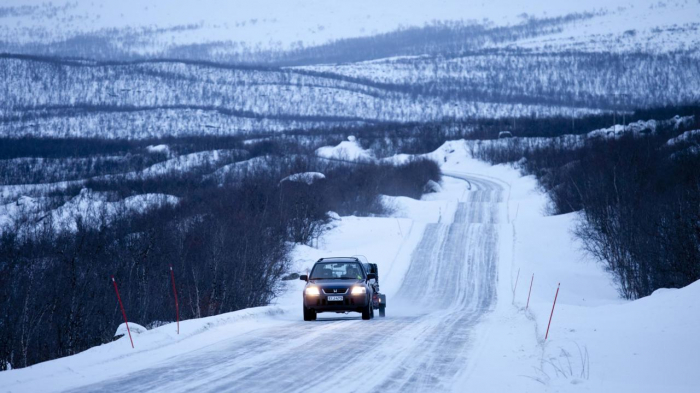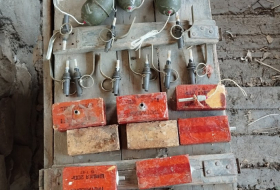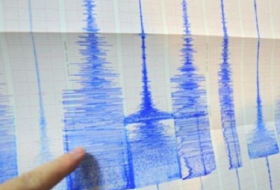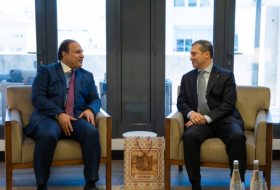Experiments in setting individuals a carbon allowance have been trialled from Finland to Australia, and some have proved popular. But can carbon rationing ever be fair?
Once a day, Katja Suhonen opens her phone to check on her carbon footprint. Every journey she makes in her home city of Lahti, a city in the south of Finland, is studied by an experimental app called CitiCap and the carbon impact of her travel choices deducted from a weekly budget.
“I have mainly travelled around by bike, public transport and walking before even using CitiCap, so it hasn’t really changed my daily routine,” says Suhonen, an early adopter of the voluntary monitoring scheme. “However, now I try to avoid private car even more than before.” If she has any credits left by the end of the week, she can exchange them for gifts like coffee or a free bike tune-up in participating businesses. Her journeys are automatically tracked by the app, and she only needs to manually input details such as how many passengers she is with if she is travelling by car.
The CitiCap app is funded by the EU’s Urban Innovative Actions, which supports projects that test out “new and unproven solutions” to issues faced by cities. In Lahti, that means cutting the impact of residents’ travel around the city. While Finland has plans to be carbon neutral by 2035, Lahti aims to get there a decade earlier. The city has already halved its carbon emissions since 1990 but to get to net zero will take a lot more work. Transport is set to be a key part of that.
Suhonen is something of an outlier in Lahti: just 5% of journeys in the town are made by bus, with most people opting to travel by car, says Anna Huttunen, who works in the city’s sustainable mobility team and is project manager of CitiCap.
Huttunen launched the app in late 2019 in an effort to get more people using public transport. She says the goal of the project is not only to reduce carbon emissions from travel, but also to learn what the city is lacking in terms of sustainable transport and how best to provide it. Huttunen says that by 2030, she hopes that half of all journeys in the city will be made using lower carbon choices such as cycling or public transport.

The CitiCap app uses gifts as incentives to motivate people to use lower carbon methods of transport (Credit: Getty Images)
This isn’t the first time politicians have dabbled in the idea of personal carbon allowances. The British politician David Miliband raised the idea in 2006, while he was the UK’s environment secretary, citing the contribution citizens could make to tackling climate change. But a subsequent investigation by the Department for Environment, Food and Rural Affairs (Defra) reported that a scheme to track everyone’s carbon use was too costly, unproven and lacked public support. Defra concluded that carbon rationing was “an idea currently ahead of its time”. With that, personal carbon allowances vanished from UK political discourse.
“It’s an idea that got high level political attention too early, and there wasn’t a research base,” says Tina Fawcett, a senior researcher at the University of Oxford’s Environmental Change Institute. “In theory it’s a great idea. In practice, it’s quite complicated. You really need research into the nitty gritty.”
Carbon credits
Although it didn’t become policy in the UK, the idea did capture the imagination of individuals. Carbon reduction action groups, or CRAGs, sprung up across the country as people took matters into their own hands. Among them was Angela Raffle, a medical doctor from Bristol.
“When my neighbour first said ‘Is there more we can be doing in our own lives about climate change?’, my immediate response subconsciously was ‘There’s nothing I can do, the government is in charge of this’,” she says. “Since then I’ve gradually become completely engaged in positive action. It was a very powerful question.”
We reduced our household footprint to a third or a quarter of what it had been, just by thinking and being aware of it – Angela Raffle
Raffle downloaded a CRAG spreadsheet and began tracking her carbon footprint. Once every three months she met with other members of the group to share results and discuss strategies for cutting their emissions. The plan only recorded emissions from travel and home energy use, but the group soon found themselves thinking about the impact of other areas of their lives, such as shopping choices, food consumption, and white goods. “We reduced our household footprint to a third or a quarter of what it had been,” she says. “Just by thinking and being aware of it.”

Isles such as Norfolk Island, Australia, are an ideal, self-contained place to measure people's carbon emissions (Credit: Getty Images)
On the other side of world, researchers at Australia’s Southern Cross University were planning their own experiment on Norfolk Island, a tiny Australian territory 1,500 kilometres from the mainland. With only one natural gas supplier, one power company, and a handful of petrol stations, it was the perfect self-contained place to study people’s fossil fuel use. In 2013, a quarter of the island’s 800 households were recruited to a carbon reduction scheme.
Alex Hendry wrote the software that helped calculate the islanders’ carbon footprint. “Much like a frequent flyer scheme, users had a card with an ID number, and when they purchased petrol or diesel from a service station they swiped the card,” he says. This data was compiled with home energy use and shared with residents every three months.
Even people who are trying to actively reduce their carbon footprint have very little idea of what their footprint is and where it comes from – Alex Hendry
The goal was to empower people to reduce their carbon footprint by giving them a better understanding of it. “Even people who are trying to actively reduce their carbon footprint have very little idea of what their footprint is and where it comes from,” says Hendry. “Is it electricity, is it petrol? Am I better off not driving, or making sure all my lights are off at home?” When the experiment ended 16 months later, almost two-thirds of the residents said they wanted it to continue.

Even monitoring your carbon footprint, without adding incentives for cutting it, can encourage people to reduce their emissions (Credit: Getty Images)
Back in the UK, Adam Hardy, campaign director of CarbonRationing.org, is trying to take this idea to the next level. Where the Lahti experiment focuses only on incentivising lower emissions, Hardy wants to see disincentives for individuals who over-emit. He envisions a nationwide “total carbon rationing” programme that goes all the way back to the energy supplier, to give a figure for the carbon emissions in the atmosphere as a result of any given product. This would require auditing the carbon footprint of the supply chain of everything sold in the UK, including imports.
“People are doing what they can on a personal level to reduce their carbon footprint, and hopefully getting everyone to follow suit,” he says. “Unfortunately, it’s not going to happen fast enough, laudable as it is.” For carbon rationing to work, everyone – especially the high emitters – have to be enrolled.
With customers only given a limited number of carbon rations to spend each week, everyone from supermarkets to saunas would be incentivised to reduce the carbon footprint of their offering, thereby making it more attractive to consumers. But, crucially, those who wanted to maintain high-impact lifestyles, such as regularly flying around the world, would have to buy extra carbon credits from someone else. “What you’re looking at is effectively making carbon into a second currency,” he says.
A dark cloud
Some would see this as a draconian – even totalitarian – policy. Yet Hardy says it offers a greater degree of freedom than carbon taxes. “Carbon rationing offers you a lifestyle choice. You don’t have to go green on everything, you can choose”. The alternative, he says, is “an almost despairing attempt to get the world to become low carbon through moral example.”
Policymakers may be forgiven for thinking that carbon rationing is political suicide. A 2012 survey by the Carbon Trust found that while people supported carbon rationing in principle, the mood soured when it came to actually making compromises on things like foreign holidays and their shopping basket. “I love my cheese and I will always buy it, even if you tell me it’s bad for my carbon footprint,” said one respondent. “It makes me happy.”
And despite being billed by Hardy as more equitable than a flat carbon tax, carbon rationing could still hit poorer households harder. “People in the low-income groups may have an above-average energy use, because they live in inefficient homes,” says the University of Oxford’s Tina Fawcett. Rural populations are also likely to be penalised, as there are fewer options for getting around besides cars.

People living in rural areas could be penalised under a carbon rationing scheme, as there are few options but cars to get around (Credit: Getty Images)
In Lahti, every CitiCap user is given a personalised carbon allowance that accounts for some of these factors, such as how close they live to schools and their place of work. But the ethics of what constitutes a justifiable reason to burn more carbon is fraught with sensitivities. Should elderly people be penalised for living alone? Should parents be chastened for driving children to school during sub-zero weather, rather than walking?
We have people spending their entire lives advertising and promoting carbon-intensive ways of eating, living, travelling. Now we’re supposed to build this huge trading scheme to force people to ignore this – Angela Raffle
Despite organising her own carbon reduction group, Raffle is deeply sceptical of calls for a government-led plan. “We’ve designed a world so more fossil fuel energy could be sold,” she says. “We have people spending their entire lives advertising and promoting carbon-intensive ways of eating, living, travelling. Now we’re supposed to build this huge trading scheme to force people to ignore this.”
Faced with an entrenched culture of consumerism, few research trials, wavering support from the public and a lack of political will, can a personal carbon allowance ever be more than an idea ahead of its time?
People power
Well, yes. Because it turns out that you don’t need a compulsory nationwide carbon rationing system to achieve big reductions in emissions. Even very small, imperfect carbon allowance schemes have surprisingly powerful results.
In the Norfolk Island study, participants were set a goal of reducing their fossil fuel use by 10% over the course of the study. No rewards were offered for doing so, nor were there any penalties for failing. And yet, the average household reduced their carbon footprint by 18%.

One study found that monitoring individuals' carbon footprint led them to cut emissions by 18% (Credit: Getty Images)
Grassroots carbon reduction efforts also sidestep the prickly issue of policing lifestyle choices. Rather than punishing people for owning a car or living in the countryside, individuals are free to find as much or as little space in their own lives where they can economise.
By becoming more involved in this kind of stuff, in particular with other people, it actually becomes a positive part of your life – Angela Raffle
And while the Carbon Trust report found people resistant to change their core lifestyle, it also found they would embrace low carbon options where these existed, and widely supported labelling products with their carbon footprint to make that possible. The key was being given a choice, rather than an ultimatum. “It’s absolutely not about punishment or denials,” says Raffle. “By becoming more involved in this kind of stuff, in particular with other people, it actually becomes a positive part of your life.”
Where political leadership has failed, community spirit appears to be stepping in. “I saw someone on Twitter the other day, saying that they were going to lead a one-tonne carbon lifestyle this year,” says Fawcett. “People are trying to communicate around the idea of voluntary restraint.” Politicians may shy away from talking about carbon allowances, but the dozens of smartphone apps available to track and reduce your carbon footprint shows the idea remains popular.
And while it falls far short of total carbon rationing, Hardy says that labelling products with their carbon footprint is an important first step. “The politicians and policy makers don’t really believe in this stuff, they’re only going to take the idea seriously if it has some kind of threshold of followers,” he says, adding that his goal is to “put this dream out there… that it might all actually work.”
Back in Lahti, Anna Huttunen admits that CitiCap is a partial solution at best. “The hard fact is that every city, Lahti especially, has a group of car drivers who won’t change their behaviour,” she says. “But a big group of people are ready to change. You need to start somewhere.”
BBC
More about: carbon
















































